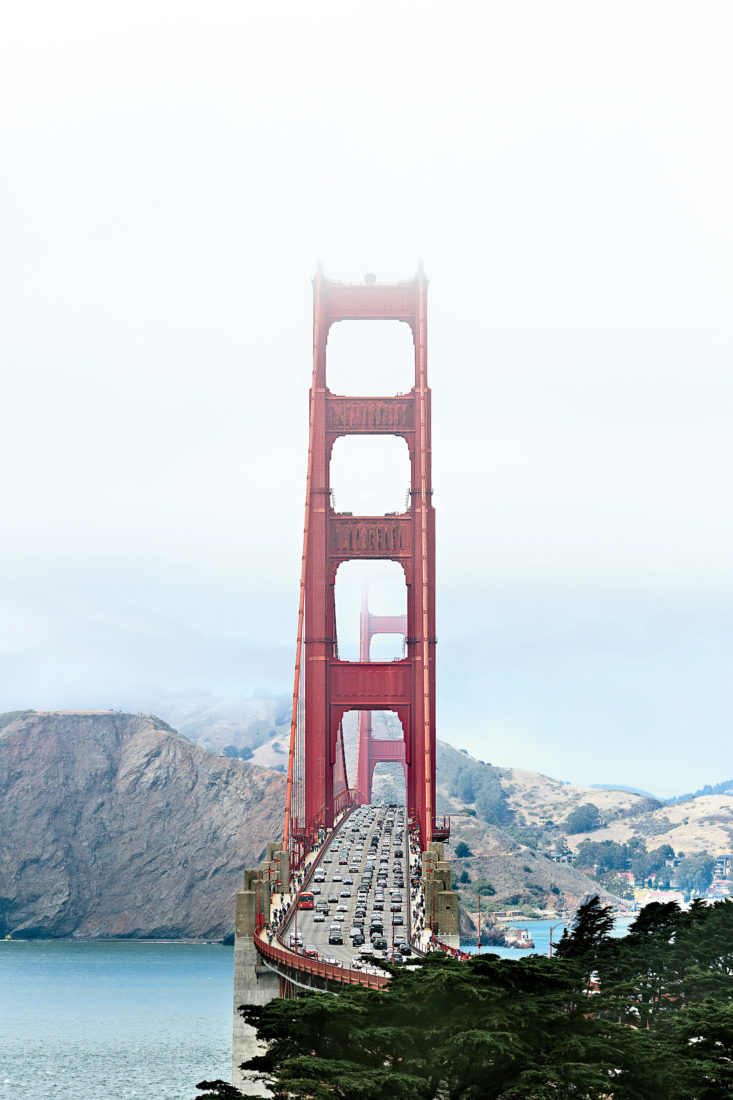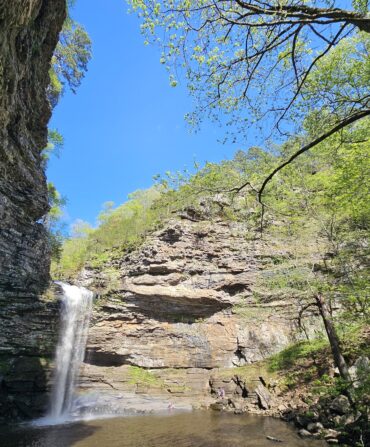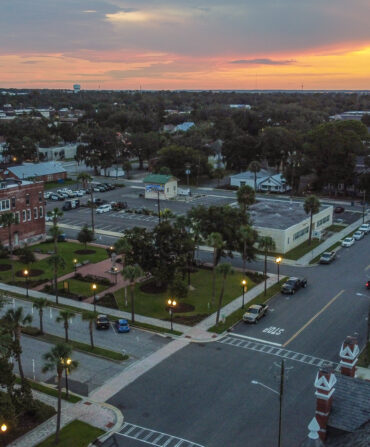Describing the city of San Francisco is a bit like trying to put a cloud in a box. The place keeps twisting, and changing. As Oscar Wilde wrote of my adopted home in The Picture of Dorian Gray: “It is an odd thing, but every one who disappears is said to be seen at San Francisco. It must be a delightful city, and possess all the attractions of the next world.” He was both right and wrong—the place is delightful, yet seedy and sharp. It’s conventional and confectionary, yet foreign and wild. And part of the city’s identity are its constant, ever-changing lures: Gold. Land. Free love. Start-ups. San Francisco is a siren—a wily girl who called this Southerner to try it for a year. I’ve never left.
I came to San Francisco in 1999. I’ve been a displaced Southerner since college. I love home—I visit so much the security staff at the airport in Charleston, South Carolina, know my name. Yet I’ve always felt a bit itchy there, as if I’m wearing someone else’s pretty but not quite right shoes. So at twenty-six, I packed up all my belongings and bought a ticket. I wasn’t certain what I was going to do, as I had no skills and little to offer other than an expensive college degree, which, judging from the other passengers’ sweatshirts, hardly set me apart. But a friend had gotten “rich on paper” due to the Internet boom, and besides, New York, where I had lived for a year, seemed over. (In my twenties, it seemed okay to declare entire metropolitan areas over.) As we landed, I pressed my forehead against the window. The city was iced with pink and blue, but mostly it was the dry color of the wafers our reverend at St. Michael’s Episcopal Church in Charleston used to place on my tongue.
I came with a boyfriend, and we landed on a friend’s sofa. She lived in a closet, crowded into an apartment with six other girls in Nob Hill. Well, she called it Nob Hill, one of the poshest neighborhoods in the city, but really it was Chinatown. Housing is always an issue in San Francisco, now more than ever. Where do you live? is always the first question when one is trying to suss out what sort of person a stranger might be. There is the Marina, thick with chic, pricey restaurants and shops, largely populated with toned, highlighted blondes and corresponding men in crisp button-down shirts. And the Mission, once home to a huge enclave of Latin American immigrants, which then morphed into hipster central. And the Castro, a lively, lovely neighborhood, where one’s residence implies that you are either an elegant gay man or living with a friend who is. And then, of course, Chinatown, a neighborhood that is still mostly home to large Chinese families, unless you are a young person temping until you find a good job and are thereby living in a closet.

Photo: Bess Friday
The Transamerica Pyramid rises high.
In the early days I was giddy with city love. I hopped on cable cars, charming one driver into letting me drive the thing all the way to the home station, where underground wheels of cable as big as houses grind day and night. I ran over the Golden Gate Bridge into the green hills of Marin. I ate German sausage, Vietnamese noodles, Irish stew, Polish pierogi, sushi that was still squirming from the Pacific. I tried surfing (too cold for my Southern blood). I skied in Tahoe (ditto). I got roped into singing backup for a drag king in a contest at a gay bar (we won!). And when a bout of homesickness threatened, I’d bike to Baker Beach to look at the waves, frigid yet not so very different from those off the South Carolina coast near Edisto Island, where I’d spent my childhood summers. Eventually, my boyfriend went back to New York, but I was more in love with San Francisco than I was with him. (There was more to that, of course, but I’m boxing clouds. Forgive me.)
Now I am forty, and I have a three-year-old daughter. This seems to have happened inordinately quickly. Not the daughter part—mothering, of course, has slowed things down quite a bit. Yet time pours away here. There are no seasons, or if there are, I can’t discern them. Fall is a bit hotter than normal; summer, a bit colder. And every weekend brings some fabulous event black-tie symphony galas; Bay to Breakers, a debauched “race” through the city each May during which costumed (and naked) runners trek up the Hayes Street Hill; Hardly Strictly Bluegrass, a three-day music festival in Golden Gate Park in October that sounds an awful lot like home. There are so many must-do events that one’s youth extends like taffy. Men and women in their late thirties, worn from the parties, are just getting around to starting their careers. Or that was me, until I had my aforementioned daughter, and folded a baby, her father, and a large dog into my single girl’s apartment. (Bernal Heights, meaning I am somewhat hip but like my quiet.)
A topic that has been preoccupying me lately is what it means to be a San Franciscan. I know only a handful of natives—throughout the years, almost all of my friends have been transplants. Many are Southerners. We huddle together on New Year’s, eating hoppin’ John and collards; we put on hats and drink bourbon until we fall down on Derby Day. (Or we did, before the kids.) I’ve met people from New York, Chicago, Boston, New Jersey. But hardly any from San Francisco.
Yet my daughter screeched her way to life in a hospital room with a view of the Golden Gate Bridge. I want her to have an identity. I, like most forty-year-olds with a wandering spirit, have weathered some storms. And always, in times of confusion, I’ve been able to crawl back to who I am: a Southerner. Rock-solid from-ness. I drive slowly and wave at people. I curl my hair before swimming. I believe manners are more important than money. When I meet another Southerner in this strange land, we lean slightly toward each other, like lost magnets.
But this place is so diverse, a sense of from-ness seems almost impossible to me. What will being San Franciscan mean for my little girl? I asked my friend Gary Kamiya, whose new book, Cool Gray City of Love, is the latest brilliant effort to define this city. Gary has lived here for forty years. If anyone knows what a San Franciscan looks like, it’s Gary.
“Egalitarianism,” he said. “In the gold rush, graduates of Yale sold peanuts on the plaza, and ditchdiggers became magnates. Free-spiritedness. Rebelliousness. A certain European joie de vivre.” He paused. “And then there is the beauty. Because John Muir’s natural paradise pops up on every street corner, San Franciscans tend to be slightly more psychically self-sufficient, and generally detached from the rat race. So maybe airheadedness, spiritual sloppiness, and smugness. But also an elemental, calm, old-soul quality.” Another pause. “Is that enough?”
In other words, the San Franciscan couldn’t box up the cloud either. But of course, that’s why I moved here in the first place. I was a Southerner with itchy feet and a wandering spirit, and here, the siren sings, and she has a message: In San Francisco, you can be whatever you want.









